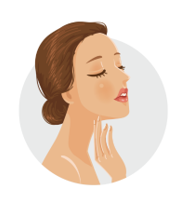Get rid of toe/knee callus in 6 steps I Dermatologist Guide
September 3, 2013 2025-04-24 4:48Get rid of toe/knee callus in 6 steps I Dermatologist Guide
As an Amazon associate, Dermatocare earns from valid purchase made by clicking on the affiliate links in this blog.

Get rid of toe/knee callus in 6 steps I Dermatologist Guide
“Doctor, the skin on my toes is getting thickened and less sensitive to touch. Is it toe callus? How do I get rid of it?”
Calluses are areas of diffuse thickening that develop due to intermittent pressure or friction on a broader area of skin like palms, soles, knees, etc. They are painless, unlike corns, and the thickened skin is often less sensitive to touch. In this article, we will highlight what causes callus and a step-to-step guide on how to get rid of callus.
Pro-tip: Use our FREE Solution Finder Tool to get dermatologist approved OTC solutions 20 common skin and hair concerns, including warts, corns, hives, fungal infections, acne, dark spots, hair fall, and dandruff. We’ve got you covered!
What causes callus?
Callus occurs because of intermittent pressure on the broader area of the skin. They occur when a certain area of skin gets rubbed in a repetitive activity done by a person. Such repetitive actions may be due to his occupation, or involvement in sports, hobbies, praying or otherwise. For example:
- Calluses on knuckles of boxers.
- Calluses on toes in joggers.
- Calluses on nipples in runners.
- Calluses on the neck in a violinist.
- Calluses on the hand in bowlers or writers.
- Calluses on the knee are common in those who pray daily, interestingly called prayer callus.
- Calluses on feet can occur because of bony deformities like bunions or hammertoe.
If you have a callus in a particular area of your skin, note which kind of activities might be causing them.
How to get rid of callus?
Here is a step-to-step guide on how to get rid of callus at home:
1. Identify the activity that is causing callus:
Keep a watch on all the activities that put pressure or friction on the callus area, and then find out which one is done by you repetitively.
2. Change the activity to avoid pressure:
If possible, modify that activity so that minimum or no pressure is exerted on that area.
3. Pad or cushion the area of the callus:
This might involve wearing gloves or socks, bandaging, padding with cotton or foam or wearing protective rings, etc., in the callus area.
4. Pad or cushion the cause of callus:
If you cannot pad the callus, you could pad the cause of the callus, like using a soft matt below your knees while praying.
5. Soften the callus:
Dip your feet/knee callus in warm water for 15 minutes to soften the callus, followed by gentle rubbing with a pumice stone.
6. Cap the callus:
There are varieties of corn caps available OTC with varied concentrations of salicylic acid. Soften the callus by soaking in warm water, followed by thorough drying. Put the corn cap over the callus only. Avoid normal skin.
RECOMMENDED PRODUCT
Dr. Scholl’s Corn Remover

Available on
Paint the toe/knee callus:
As a dermatologist, I prefer corn paints instead of corn caps to eliminate callus. Corn paints are a collodion mixture of salicylic acid and lactic acid available by prescription or otherwise. They can be applied precisely over the callus without spillage owing to their thick consistency and instant drying property. The is better option for knee callus.
Dr. Scholl’s Corn/Callus Remover Liquid
Available on
Amazon.co.uk (has TCA instead of salicylic acid).
What is the treatment to get rid of the knee/toe callus?
You might need a consultation with a general physician, chiropodist or dermatologist if the above measure does not help eliminate callus. He might prescribe you a corn paint to apply or pair the thickened skin of callus. Pairing involves scraping the dead skin of the callus with the help of a blade. Pairing is a painless procedure. Bleeding does not occur during the procedure because the callus is devoid of blood vessels.
ROUTINE FINDER
Get free dermatologist-recommended regime by choosing your skin or concerns.

FACE

HAIRS

CHILD

BODY





